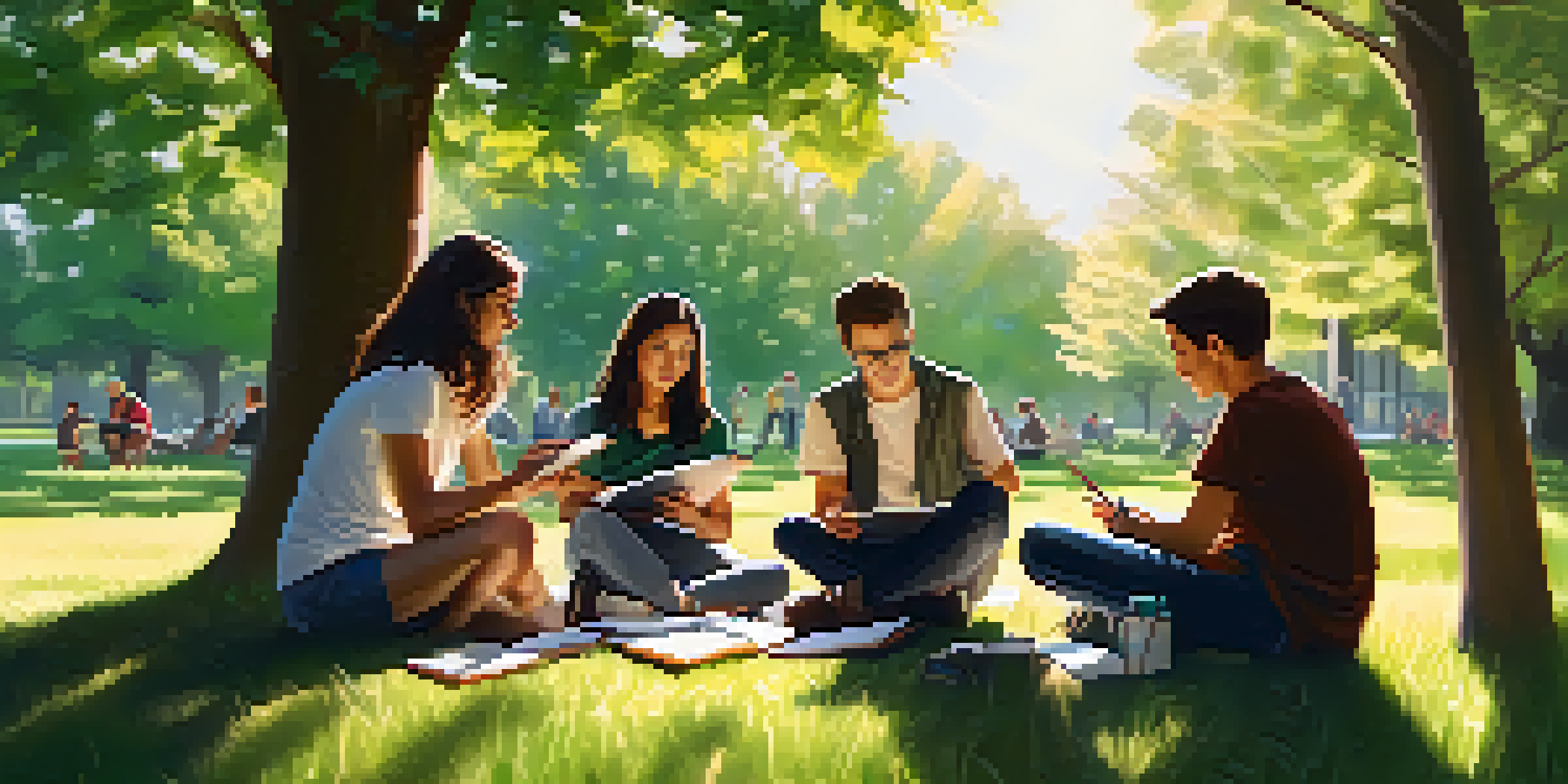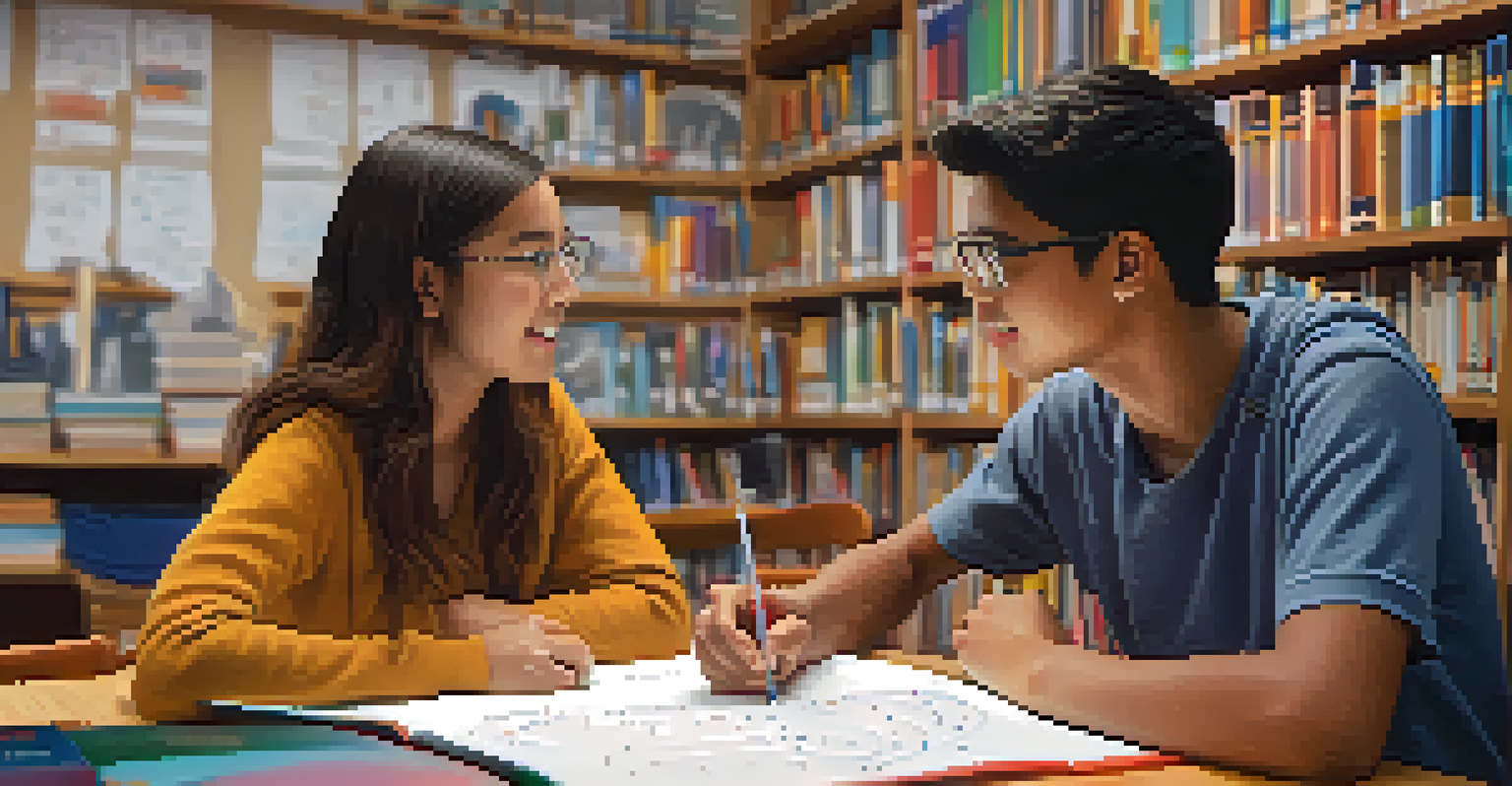The Role of Peer Learning in Personalized Education Models

Understanding Personalized Education Models
Personalized education models focus on tailoring learning experiences to fit individual student needs. This approach recognizes that each student has unique strengths, weaknesses, and interests, making a one-size-fits-all approach ineffective. By customizing curricula and pacing, educators can better engage students and improve learning outcomes.
Education is not the filling of a pail, but the lighting of a fire.
In these models, technology often plays a significant role, offering adaptive learning tools that adjust to a student's progress. However, the human element is equally important, and that’s where peer learning comes into play. It provides a complementary layer of support that can enhance the effectiveness of personalized learning strategies.
Ultimately, personalized education aims to empower students to take ownership of their learning journey. By incorporating peer learning, educators can foster a community of collaboration that not only improves academic performance but also builds essential social skills.
Defining Peer Learning and Its Benefits
Peer learning involves students working together to achieve shared learning goals, often taking on roles as both teachers and learners. This approach can take many forms, such as study groups, collaborative projects, or peer tutoring sessions. The key benefit is that it allows students to engage with the material actively, rather than passively receiving information from a teacher.

One significant advantage of peer learning is that it promotes deeper understanding. When students explain concepts to each other, they reinforce their knowledge and uncover gaps in their understanding. Moreover, this collaborative process helps develop critical thinking and problem-solving skills that are essential in today's fast-paced world.
Personalized Education Empowers Students
Personalized education models tailor learning experiences to individual student needs, enhancing engagement and outcomes.
Additionally, peer learning fosters a sense of belonging and community among students. Feeling connected to peers can enhance motivation and reduce anxiety, creating a more supportive learning environment. This is especially crucial in personalized education, where each student's journey is unique.
How Peer Learning Enhances Engagement
Engagement is a critical factor in effective learning, and peer learning can significantly boost students' enthusiasm for their studies. When students collaborate, they often feel more invested in the material because they can share their thoughts and ideas. This interaction can spark interest and make challenging subjects more approachable.
Tell me and I forget, teach me and I remember, involve me and I learn.
Furthermore, peer learning offers opportunities for students to explore topics that interest them. By collaborating with others who share similar passions or learning goals, students can delve deeper into subjects, enhancing their overall educational experience. In this way, peer learning aligns perfectly with the principles of personalized education.
Additionally, the social aspect of peer learning creates a sense of accountability among students. When working together, they motivate each other to prepare, participate, and succeed. This shared responsibility cultivates a more engaged learning atmosphere, which benefits everyone involved.
The Role of Technology in Peer Learning
In today's digital age, technology plays a vital role in facilitating peer learning. Online platforms and tools allow students to connect, collaborate, and share resources, regardless of their physical location. Whether through discussion forums, video conferencing, or collaborative documents, technology makes peer learning more accessible and flexible.
Moreover, educational apps and software often incorporate features that support peer interactions, such as group assignments and feedback mechanisms. These tools can help track progress and foster accountability, ensuring that students remain engaged and motivated. By integrating technology, educators can create a seamless blend of personalized learning and peer collaboration.
Peer Learning Boosts Engagement
Engaging in peer learning fosters collaboration, motivates students, and makes challenging subjects more approachable.
However, it’s essential to strike a balance between technology and face-to-face interactions. While online tools are beneficial, in-person peer learning experiences can offer unique advantages, such as building rapport and enhancing communication skills. A hybrid approach that combines both methods can create a comprehensive learning experience.
Challenges of Implementing Peer Learning
While the benefits of peer learning are clear, implementing it within personalized education models can come with challenges. One common issue is ensuring that all students are equally engaged and contributing to the learning process. Sometimes, stronger students may dominate discussions, leaving others feeling overshadowed or reluctant to participate.
Another challenge is the potential for misinformation. When students explain concepts to each other, there is a risk that incorrect information may be shared, leading to misunderstandings. To mitigate this, educators must provide guidance on how to facilitate effective peer learning and encourage students to verify information collaboratively.
Lastly, not all students thrive in peer learning environments. Some may prefer working independently or may struggle with social interactions. Educators need to be aware of these differences and provide alternative support mechanisms to ensure all students feel comfortable and included in their learning journey.
Best Practices for Fostering Peer Learning
To successfully incorporate peer learning in personalized education models, educators should start by clearly defining learning objectives. This clarity allows students to understand the goals of their collaborative efforts and encourages meaningful participation. Setting guidelines for group dynamics can also help create a structured environment that promotes equality among peers.
It’s also beneficial to provide training on effective communication and collaboration skills. Teaching students how to give constructive feedback, ask questions, and engage in discussions can significantly enhance the peer learning experience. When students feel equipped to support each other, the learning outcomes improve.
Technology Enhances Peer Collaboration
Digital tools facilitate peer learning by enabling connections and resource sharing, while balancing online interaction with face-to-face engagement.
Lastly, regular reflection on the peer learning process can be invaluable. Encouraging students to share their experiences, challenges, and successes helps them recognize the value of collaboration. This reflective practice not only reinforces learning but also fosters a culture of continuous improvement.
The Future of Peer Learning in Education
Looking ahead, the role of peer learning in personalized education is expected to grow even more significant. As educational institutions continue to embrace technology and innovative teaching methods, the potential for collaborative learning experiences will expand. This evolution could lead to more diverse and enriched learning environments where students become active participants in their education.
Moreover, the increasing recognition of social-emotional learning highlights the importance of peer interactions in education. Skills such as empathy, teamwork, and communication are essential for students' future success, and peer learning is a natural avenue for developing these competencies. Schools that prioritize collaborative learning will be better equipped to prepare students for the challenges of tomorrow.

Ultimately, the integration of peer learning into personalized education models can create a more holistic learning experience. By valuing collaboration alongside individualized instruction, we can help students thrive academically and socially, setting them up for lifelong success.